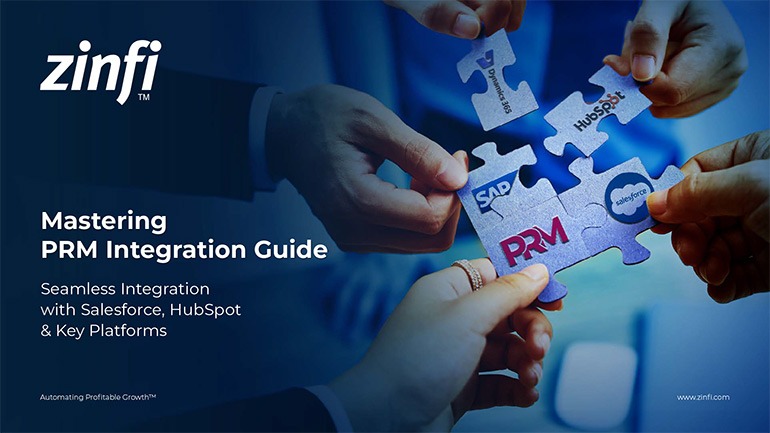Glossary - How to - Partner Collaboration
How to Improve Partner Collaboration?
Introduction
Partner collaboration drives revenue, innovation, and market expansion in today’s interconnected business landscape. Organizations that work with channel partners, resellers, distributors, or affiliates must ensure seamless communication, goal alignment, and shared resources. Effective partner collaboration fosters trust and efficiency, ultimately leading to a successful business.
However, managing multiple partnerships requires partner relationship management (PRM) automation to streamline workflows, enhance transparency, and improve engagement. PRM solutions offer integrated platforms that facilitate communication, track performance, and provide real-time insights, allowing businesses to optimize their partner collaboration strategies.
Key Takeaways:
Establish Clear Goals and Expectations:
Businesses must clearly define partnership objectives to improve collaboration, involving:
- Aligning with mutual goals such as revenue targets, market expansion, or customer acquisition.
- Outlining key performance indicators (KPIs) to measure success.
- Providing partners with detailed guidelines and expectations.
- Using PRM software to create shared dashboards for tracking progress.
Enhance Communication and Transparency:
Transparent and consistent communication is vital for strong partnerships. Ways to achieve this include:
- Implementing centralized communication channels such as PRM portals.
- Conducting regular meetings, webinars, and check-ins.
- Leveraging real-time data sharing to ensure partners are informed.
- Utilizing automated reporting tools to provide insights on performance metrics.
Streamline Onboarding and Training:
A structured onboarding process ensures that partners understand products, services, and processes. Steps include:
- Developing a comprehensive training program accessible through a PRM platform.
- Offering interactive resources such as videos, guides, and FAQs.
- Providing certification programs to enhance partner competency.
- Regularly updating training materials to reflect market trends and product updates.
Utilize Partner Relationship Management (PRM) Tools:
PRM tools enhance collaboration by offering:
- Centralized access to documents, marketing materials, and sales resources.
- Automated workflows for deal registration, lead distribution, and sales tracking.
- Integration with CRM and other business tools for seamless data flow.
- Performance analytics to monitor partner contributions and optimize strategies.
Foster a Culture of Mutual Support and Engagement:
Strong collaboration goes beyond business transactions. Companies should:
- Recognize and reward partner contributions through incentive programs.
- Encourage feedback for continuously improving collaboration strategies.
- Provide co-marketing opportunities and joint promotional campaigns.
- Build long-term relationships based on trust and shared success.
Summary of Key Takeaways:
Improving partner collaboration requires a strategic approach that includes setting clear goals, enhancing communication, streamlining onboarding, leveraging PRM tools, and fostering engagement. Organizations must align their objectives with their partners, ensure transparency through regular interactions, and invest in training and automation to drive efficiency. By nurturing relationships and providing the necessary resources, businesses can create a collaborative ecosystem that supports growth, innovation, and success.
Key Examples:
- Automotive Manufacturing: Collaboration between manufacturers and suppliers improves production efficiency, ensures supply chain stability, and accelerates product innovation. PRM tools help manage inventory, compliance, and logistics seamlessly.
- Consumer Electronics: Partnering with retailers and distributors ensures that consumer electronics brands reach global markets. Real-time inventory tracking and shared marketing initiatives optimize product launches and sales.
- Energy Production: Energy companies collaborate with contractors, technology providers, and regulatory bodies to implement renewable energy projects and improve grid efficiency. Digital collaboration platforms enhance project management and data sharing.
- Financial Services: Banks and fintech companies collaborate to offer innovative payment solutions, improve customer experience, and boost cybersecurity. Secure PRM platforms facilitate compliance and data exchange.
- Food and Beverage: Suppliers, distributors, and retailers work together to ensure product availability, maintain quality standards, and enhance brand visibility. Automated inventory tracking and marketing support improve distribution efficiency.
- Healthcare Services: Collaboration between hospitals, pharmaceutical companies, and medical device manufacturers ensures better patient outcomes. PRM tools enable efficient compliance tracking and patient data security.
- Information Technology: IT companies partner with managed service providers (MSPs), software vendors, and system integrators to develop and deliver solutions. Cloud-based PRM platforms facilitate deal registration, training, and customer support.
- Pharmaceutical Development: Pharmaceutical companies collaborate with research institutions, distributors, and healthcare providers to accelerate drug development and distribution. Data-sharing platforms enhance research efficiency and regulatory compliance.
- Retail Industry: Retailers partner with suppliers, logistics providers, and marketing agencies to boost customer experience and streamline supply chain operations. AI-powered PRM tools optimize pricing strategies and demand forecasting.
- Telecommunications: Telecom providers collaborate with hardware manufacturers, software developers, and service partners to expand network coverage and introduce new technologies. PRM systems facilitate resource allocation and customer service management.
Conclusion:
Improving partner collaboration is essential for driving business success across industries. Organizations can maximize the value of their partnerships by establishing clear goals, enhancing communication, streamlining onboarding, leveraging PRM tools, and fostering engagement. Investing in PRM solutions ensures seamless workflows, real-time insights, and effective collaboration strategies. Companies prioritizing partner collaboration will achieve long-term growth, competitive advantage, and increased revenue.
Associated Keywords:
- Partner Collaboration Strategies
- How To Enhance Business Partnerships
- PRM Tools for Partner Management















